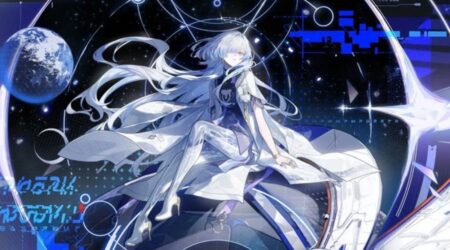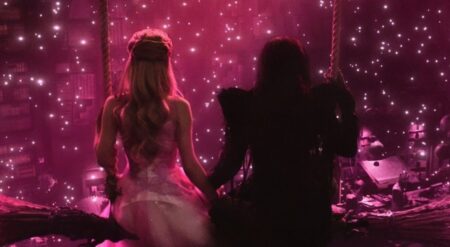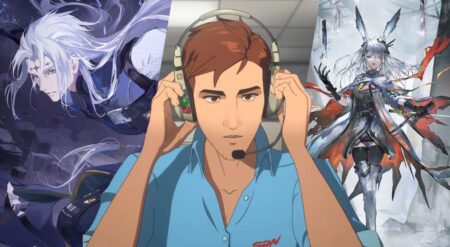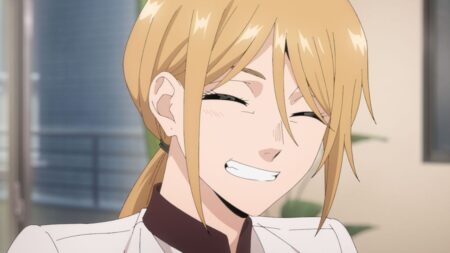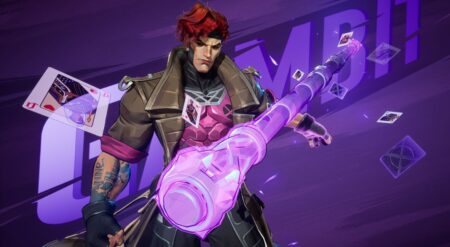Set in Star Wars’ High Republic era, Star Wars: The Acolyte offers a glimpse into a time of upheaval and transformation, where familiar themes are reimagined alongside new revelations. From the portrayal of Jedi outposts to the subtle references to the Code of the Sith, each nod to the broader Star Wars mythos enriches the series inviting fans to embark on an immersive journey through untold chapters of the franchise’s history.
1. The Timeline
The High Republic era, as depicted in comics and novels, spans from 229 BBY to 382 BBY, varying depending on the phase. This timeline places most of the stories about 350 years before the events of The Phantom Menace. The Acolyte, set in 132 BBY, occurs a century before The Phantom Menace. This positions both readers familiar with High Republic content and casual fans on equal footing.
Despite our collective knowledge spanning roughly 150 years of the High Republic era, significant changes can unfold in the Star Wars universe over a few decades. Just as Emperor Palpatine reshaped the galaxy within 30 years, so too can the events of the High Republic era evolve. So, even with the presence of familiar characters like Vernestra Rowh, most fans are starting from the same baseline of understanding for this series. Much like not needing prior knowledge of the Skywalker family, diving into The Acolyte offers an opportunity to explore new and thrilling narratives without any prerequisite information.
2. Jedi Outpost

In The Acolyte, we encounter Jedi Master Indara (Carrie Anne-Moss) at an outpost located on Ueda. Although the exact location of Ueda remains unspecified, the state of the cantina and the condition of Indara’s robes, compared to those of other Jedi like Yord, suggest that Ueda is likely in the Outer Rim. In this era, that area of space was even more unruly than we see in the Skywalker Saga.
Jedi outposts played a crucial role during the High Republic Era, particularly in the Outer Rim Territories. These installations formed a network across various planets, serving as bases for Jedi exploration into uncharted space and as primary points of contact with Rim inhabitants. They offered protection to vulnerable populations and engaged in outreach activities.
3. Force-Fu

One unique way that sets The Acolyte apart from other Star Wars periods is its approach to combat, known as Force-Fu. Unlike the Kendo-based fighting style seen in other eras, The Acolyte emphasizes Iaidō-inspired techniques, where Force-Fu utilizes the Force as an extension of martial arts. While not quite as elegant, we see this style used by Ezra Bridger in Ahsoka.
In this era, Jedi rely on the Force as their primary means of defense and attack, often keeping their lightsabers sheathed until absolutely necessary. When conflicts escalate, they wield their sabers to swiftly end fights with a single stroke. This unique fighting style is showcased prominently in the series, starting with the very first episode and continuing through various confrontations, such as Mae’s duel with Jedi Master Sol.
4. Aliens

The High Republic era in Star Wars: The Acolyte offers a refreshing abundance of alien diversity. While familiar faces like Vernestra Rwoh bring continuity, the series also includes lesser-known species in live-action, like the Zygerrians and Theelins.
The Trade Federation
Established in 350 BBY during the High Republic Era, the Trade Federation ascended to prominence within the Outer Rim, even before the Skywalker Saga. Led by the Neimoidian species, it gradually expanded its influence, embroiling itself in a protracted power struggle with the Republic. Over the ensuing decades, the Federation’s stature, prestige, and military might burgeoned, shaping the galactic landscape and perpetuating its enduring conflict with the Republic.
Most importantly, their portrayal in The Acoltyle is less racially charged than their depiction in The Phantom Menace, offering a more nuanced perspective.
Zygerrians
Yord’s padawan belongs to the Zygerrian species, humanoid felines introduced in the Clone Wars animated series. Originating from Zygerria, they once thrived by capturing and selling slaves until their practices were outlawed by the Jedi during the Galactic Republic era. The revival of their slave trade during the Clone Wars underscores the complexity of their species, highlighting how different factions may exist within an era, contrasting with their portrayal in the Skywalker Saga.
Theelin
Jecki Lon, a Jedi Padawan, is a Theelin-human hybrid representing the distinctive traits of the Theelin species. Recognizable by their vibrant hair colors and spotted skin, Theelins are known for their artistic inclinations, with many pursuing careers in arts and entertainment. Despite being a rare species, Theelins have made notable contributions across various fields, from communications engineering to bounty hunting and military service, showcasing their adaptability and versatility in our story’s universe.
Mirialans
Vernestra Rwoh, a pivotal character in The Acoltye, hails from the Mirialan species known for their diverse skin tones and traditional facial tattoos, symbolizing personal achievements. With a strong connection to the Force and a belief in nature’s harmony, Mirialans have produced notable Jedi figures throughout history, including Jedi Masters Luminara Unduli, Barriss Offee, and Vernestra Rwoh. Vernestra’s longevity, spanning centuries, offers insight into the species’ extended lifespan.
5. Vernestra Rwoh

Vernestra Rwoh, a Mirialan female Jedi Master, is the sole character with prior connections to the High Republic era. Having been promoted to Jedi Knight at just fifteen, she embarked on her first mission supervising Avon Starros, an inventor’s daughter. However, a bombing incident stranded them on the jungle moon Wevo, where she took Padawan Imri Cantaros under her wing after facing off against the Nihil pirates. She would then go on to be a significant figure in the upcoming conflict with the pirates.
Devoted to the Jedi Order’s ideals, Rwoh’s portrayal in The Acolyte suggests a steadfast adherence to tradition, reminiscent of the dogmatic views that contributed to the Jedi’s downfall. While her characterization 100 years later may not be my favorite, it’s worth noting that characters, especially kids, rarely stay the same in Star Wars. More than anything, acknowledging Rwoh’s aromantic identity could further diversify Star Wars representation, aligning with recent efforts to broaden inclusivity within the franchise.
6. Osha and the Jedi Order

Osha’s journey within the Jedi Order is bound to become legendary. Her path parallels that of both Anakin Skywalker and Ahsoka Tano. Similar to Anakin, she joined the Jedi Order at an older age, carrying with her deep-seated attachment issues stemming from the loss of her family. Moreover, her departure from the Order echoes Ahsoka’s exit during the Clone Wars.
Though their reasons differ, when suspicions arise among the Jedi that Osha is linked to mysterious deaths across the galaxy, it evokes memories of “The Wrong Jedi” in The Clone Wars, where Ahsoka’s innocence is doubted by all except her master. Osha’s former master, Master Sol, emerges as a steadfast defender, going to great lengths to shield her from harm. While Master Sol readily believes Osha’s innocence, lingering wariness among the Jedi mirrors the skepticism faced by Ahsoka during her trials in the Clone Wars.
7. View of the Force

One of the most intriguing aspects of The High Republic era is its portrayal of the Force. In a brief lesson with Master Sol, we glimpse a much deeper understanding of the Force than what is portrayed in the Skywalker Saga. Different beings perceive the Force in diverse ways, such as a song, an endless, storm-tossed ocean, a massive tree with deep roots, an interlocked series of gears, and even dancing with the elements.
Further, the Convocation of the Force, established around 382 BBY on Jedha, fosters understanding among various Force religions. This council aimed to foster understanding among various Force religions outside of the Jedi’s view. These diverse perspectives on the Force held by the Jedi and other Force practitioners during this era suggest potential new developments in our understanding of the Force within the Star Wars canon. This also sheds light on what may have been lost in the centuries leading up to the Skywalker Saga.
8. Carlac

The plot of The Acolyte takes us to several planets, most of which are new to the Star Wars universe. However, amidst these new settings, one familiar planet stands out: Carlac. A recurring location in Star Wars canon across different eras, Carlac first appeared in “A Friend in Need” in The Clones Wars.
During the Skywalker Era, Carlac was depicted as a peaceful, snow-covered planet located in the Outer Rim Territories. It was home to a town inhabited by members of the Ming Po culture until it was tragically burned to the ground by the radical Mandalorian terrorist group known as Death Watch.
In the High Republic Era, Carlac served as the site of a pivotal battle during Operation: Counterstrike in the conflict between the Galactic Republic and the Nihil. Following the battle, several Nihil marauders were captured on Carlac and interrogated, leading to crucial revelations for the Jedi and the Republic.
9. Barash Vow

In the second episode of The Acolyte, Jedi Master Torbin (Dean-Charles Chapman) is revealed to have taken the Barash Vow. This solemn oath was introduced in the Darth Vader 2017 comic series and fully explored in The High Republic era. The Barash Vow involves Jedi refraining from all activities related to the Jedi Order as a form of penance, immersing themselves solely in the Force to achieve ultimate communion with it. Named after Jedi Master Barash Silvain, who originated the practice, the vow is typically undertaken as a means of atonement or to refocus on the Force.
Throughout the history of the Jedi Order, over fourteen thousand Jedi have pursued the Barash Vow. One notable example is Obi-Wan Kenobi, who adhered to the vow during his years of exile on Tatooine until Princess Leia Organa’s call for aid prompted him to leave the planet and assist in training Luke Skywalker.
The significance of the Barash Vow in the series lies in its gravity; breaking such a solemn commitment after ten years of meditation suggests a disturbing revelation about events from the Torbbin’s past.
10. Code of the Sith

During Mae’s (Amandla Stenberg) interaction with Qimir (Manny Jacinto), they reference the line “Peace is a lie,” which originates from the Code of the Sith. This code outlines the Sith philosophy, emphasizing passion, strength, power, and victory as means to break free from chains and attain freedom through the Force.
The Code of the Sith was originally conceived by David Gaider for Star Wars: Knights of the Old Republic. Inspired by the reversed ideology of the Jedi Code and partly influenced by Adolf Hitler’s Mein Kampf, Gaider crafted the Sith creed to reflect their beliefs.
In Star Wars canon, the Code of the Sith made its debut in The Clone Wars episode “Altar of Mortis.” Despite its introduction, it’s seldom referenced thereafter, with even iconic Sith like Darth Maul only alluding to fragments of it.
The mention of the Sith code during Mae’s encounter strongly suggests a connection to a Sith mentor, hinting at the potential beginnings of the Jedi’s downfall in The Acolyte. Whether the full code will be recited remains uncertain, but this revelation hints at darker forces at play within Mae’s journey.
11. Wookiee Jedi

At the end of episode two, fans are introduced to Jedi Master Kelnacca (Joonas Suotamo). Wookiee Jedi are a rare sight in both Legends and Canon. In Canon, the most prominent Wookiee Jedi is Padawan Gungi, who appeared in Star Wars: The Clone Wars. Like Tyvokka from Legends, Gungi’s lightsaber hilt is crafted from wood, specifically Bylark wood, renowned for its durability comparable to metal.
Another Wookiee Jedi from the High Republic era is Burryaga Agaburry, featured in the High Republic novels. Though only a Padawan, Burryaga played a crucial role in saving lives during the Great Hyperspace Disaster. His strong connection to the Force allowed other Jedi to sense his thoughts, despite their inability to understand his spoken words. Burryaga wielded a unique blue cross-guard lightsaber before going missing on Starlight Beacon while battling a Rathtar, leaving his fate uncertain.
Kelnacca’s backstory will be further explored in an upcoming one-shot comic by Cavan Scott, scheduled for release in September. As the High Republic era primarily unfolds in print media, it’s a natural progression to delve deeper into characters’ stories through comics and novels. Whether it’s Kelnacca or other characters from The Acolyte, there’s a chance their tales will be expanded upon.
And with Kelnacca’s story being penned by one of the original Luminous Authors, fans can expect a rich narrative that adds depth to the High Republic era. Even after The Acolyte concludes, there will still be plenty of stories to explore from this captivating era.
As Star Wars: The Acolyte unfolds, it becomes increasingly evident that the series is not merely a standalone story but a vibrant tapestry woven from the threads of Star Wars lore. With each episode, the creators navigate the established canon, integrating familiar elements while introducing fresh perspectives and narratives. From the sacred Barash Vow to the ominous whispers of the Code of the Sith, these references serve as both homage to the saga’s legacy and as signposts guiding viewers through the uncharted territories of the High Republic era.
Star Wars: The Acolyte episodes 1-2 are streaming now on Disney+.



